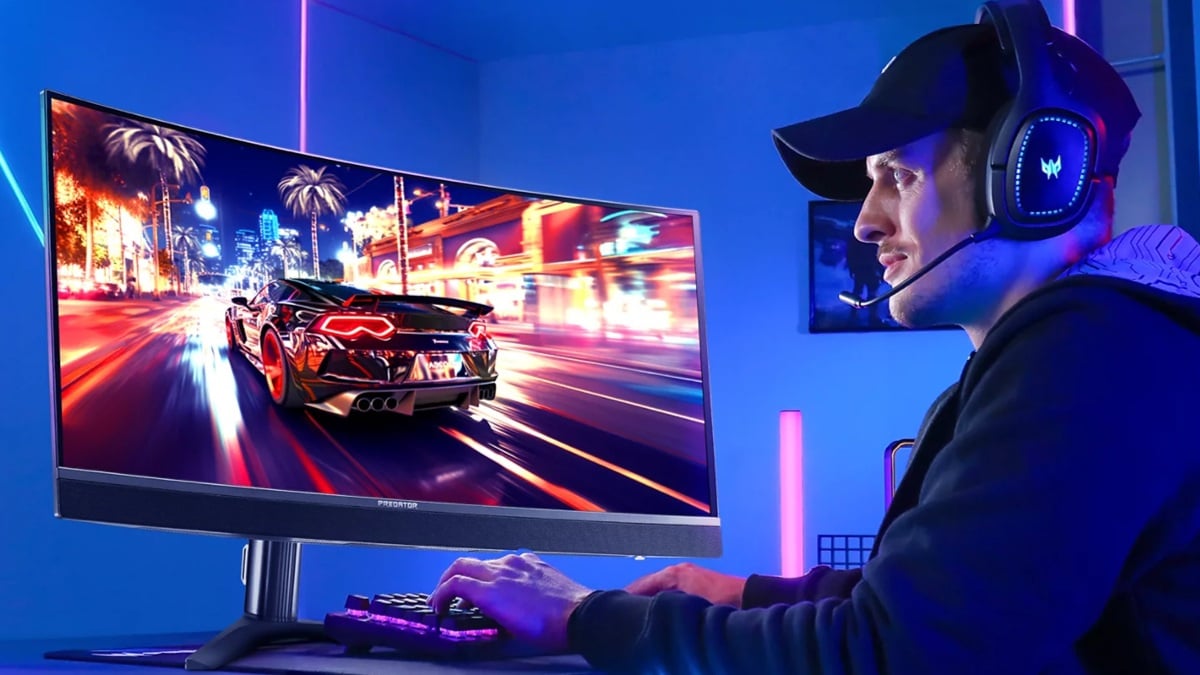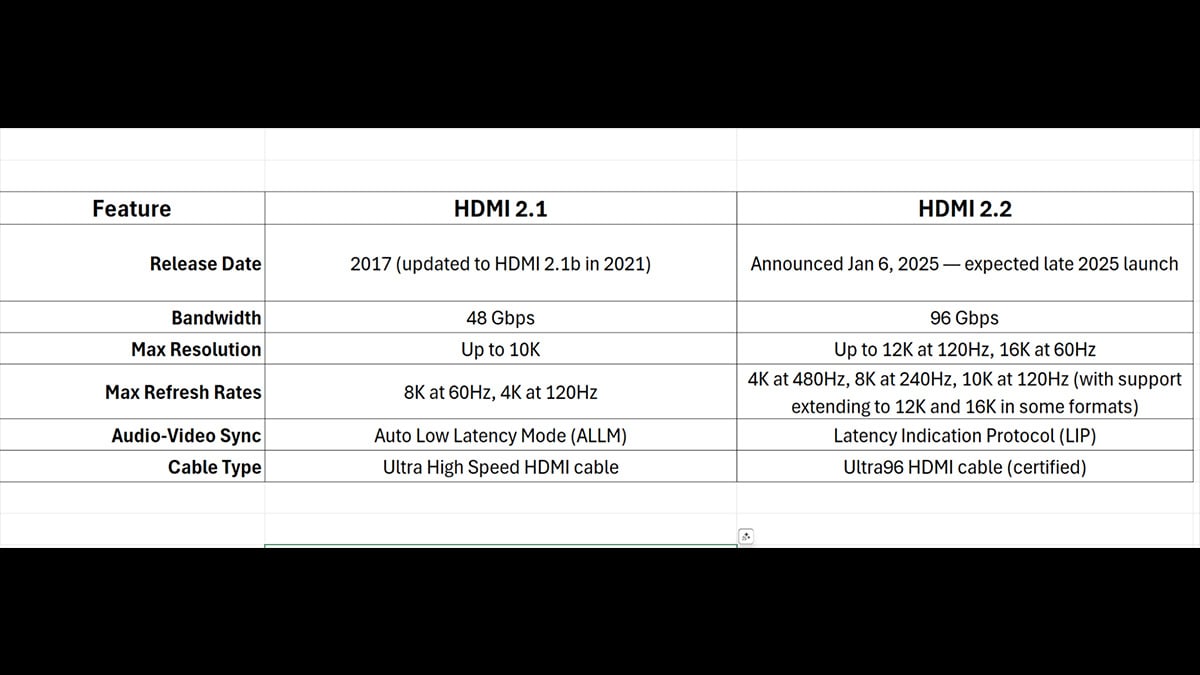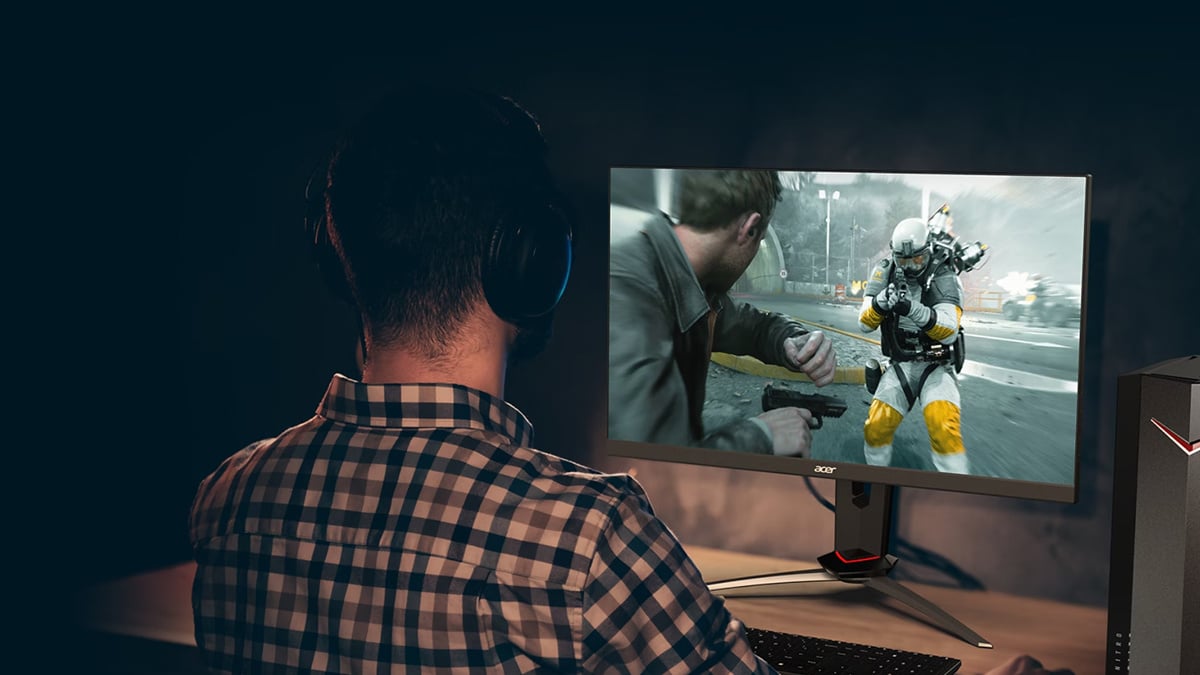
HDMI 2.2 is the newest update to the High-Definition Multimedia Interface, doubling the bandwidth of HDMI 2.1 and promising higher refresh rates, better latency performance, and future-proof cables for next-generation gaming setups. In this guide, we’ll break down exactly what HDMI 2.2 is, how it compares to HDMI 2.1, when it’s coming out, and whether it’s worth upgrading for gaming.
What is HDMI 2.2?
HDMI 2.2 is the newest HDMI standard, officially announced at CES on January 6, 2025, and expected to roll out in the second half of the year. It is designed to meet the growing demands of ultra-high-resolution and ultra-high-refresh-rate displays, particularly in gaming, virtual reality, and professional applications.
The most notable upgrade is bandwidth. HDMI 2.2 doubles the capacity of HDMI 2.1 from 48 Gbps to 96 Gbps. This allows it to support extreme display modes such as 4K at 480Hz, 8K at 240Hz, 10K at 120Hz, and in certain configurations up to 12K at 120Hz or 16K at 60Hz. It also introduces the Latency Indication Protocol (LIP), which improves audio-video synchronization and reduces delays between controller input and on-screen response.
To take advantage of HDMI 2.2, you will need new Ultra96 HDMI cables certified to handle the full 96 Gbps bandwidth. These cables will be part of the HDMI Cable Certification Program and include a certification label to confirm performance.
HDMI 2.2 pushes display technology to new limits, although its full benefits will mainly be felt in high-end, future-ready setups rather than in most current gaming systems.
HDMI 2.2 specs

HDMI 2.2 builds on the foundation of HDMI 2.1 with major improvements in bandwidth, resolution, refresh rate, and latency performance. Below are the key specifications.
HDMI 2.2 vs HDMI 2.1
HDMI 2.1 was a major step forward for gaming when it launched, introducing Variable Refresh Rate (VRR) to eliminate screen tearing, Auto Low Latency Mode (ALLM) to reduce input lag, and support for resolutions up to 8K at 60Hz or 4K at 120Hz. These features made it ideal for both next-generation consoles and high-end PC gaming setups.
HDMI 2.2 builds on that foundation with double the bandwidth, jumping from 48 Gbps to 96 Gbps. This means twice the data can be transferred every second, which is crucial for driving higher resolutions at much higher refresh rates without sacrificing image quality. With this extra headroom, HDMI 2.2 can handle formats like 4K at 480Hz or 8K at 240Hz without relying as heavily on compression technologies such as Display Stream Compression (DSC).
Another key improvement is the introduction of the Latency Indication Protocol (LIP), which provides real-time latency data to help devices better synchronize audio, video, and input signals. This can be especially beneficial for competitive gamers, VR users, and anyone sensitive to input delay.
Finally, HDMI 2.2 requires the use of new Ultra96 HDMI cables that are certified to handle the full 96 Gbps bandwidth. This ensures consistent performance at these extreme settings, something that was more challenging to guarantee with older cable standards.
For most gamers, HDMI 2.1 still meets today’s demands. But HDMI 2.2 is clearly aimed at the future, where ultra-high refresh rates, 8K and beyond, and latency-critical applications like VR become mainstream.
What does this mean for gaming?

On paper, HDMI 2.2’s specs sound like a dream for gamers — 4K at 480Hz, 8K at 240Hz, and even 10K to 12K resolution support. In reality, no modern gaming setup can take full advantage of those numbers. Even the most powerful GPUs today, like the RTX 5090 or Radeon 9900 XTX, cannot drive 10K or 12K gaming at playable frame rates in modern AAA titles.
However, that does not mean HDMI 2.2 is irrelevant for gaming in 2025. There are three key benefits gamers can expect:
- Better Refresh Rates
For competitive esports players and high-refresh gaming enthusiasts, HDMI 2.2’s ability to handle 4K at up to 480Hz and 8K at 240Hz means smoother motion and reduced motion blur in future monitors. - Lower Latency with LIP
The Latency Indication Protocol helps improve audio-video sync and can reduce controller input lag, which is especially valuable for fast-paced shooters and competitive fighting games. - Future-Proofing
Even if your current setup cannot use HDMI 2.2’s full capabilities, buying a monitor or GPU with HDMI 2.2 support ensures you are ready for the next generation of display technology. The new Ultra96 HDMI cables are also built to handle higher bandwidth, making them more durable for long-term use.
Should you buy it now?
For most gamers, the answer is no. HDMI 2.1 already supports 4K at 120Hz, 8K at 60Hz, and features like Variable Refresh Rate (VRR) and Auto Low Latency Mode (ALLM), which cover the needs of nearly all current gaming setups. If you are gaming at 1080p, 1440p, or even 4K on a 120Hz display, HDMI 2.2 will not give you a noticeable improvement right now.
For extreme high-end builds, it is a different story. If you have or plan to build a PC with something like an AMD Ryzen 9800X3D and an Nvidia RTX 5090, or you are investing in early-release 4K 480Hz or 8K 240Hz monitors, HDMI 2.2 could be worth considering for future-proofing. You would also be ready to take advantage of new Ultra96 HDMI cables and their improved bandwidth capacity.
It is important to remember that very few GPUs today can reliably run games at 8K, let alone higher resolutions, without relying on upscaling technologies like DLSS or FSR. Even with an HDMI 2.2 cable, you cannot fully utilize its maximum capabilities unless both your GPU and display can handle the required output.
In short, average gamers can safely stick with HDMI 2.1 for the next few years, while hardware enthusiasts who want to be ready for the next generation of display tech may see value in upgrading early.
Final thoughts on HDMI 2.2 and the future of gaming
HDMI 2.2 is a significant leap forward in display technology, doubling the bandwidth of HDMI 2.1 to 96 Gbps and enabling extreme modes like 4K at 480Hz, 8K at 240Hz, and even up to 12K or 16K in certain configurations. Features such as the Latency Indication Protocol improve audio-video sync and can reduce controller input lag, making it appealing for competitive gaming and immersive experiences.
However, these capabilities are far ahead of what most gaming hardware can deliver today. Very few GPUs can reliably output native 8K gaming, and virtually none can push 10K or 12K without major compromises. For now, HDMI 2.1 remains more than adequate for the vast majority of gamers, providing high refresh rates, 8K support, and essential gaming features.
HDMI 2.2’s true value lies in future-proofing. Early adopters with cutting-edge PCs and next-generation displays may benefit sooner, but for most, waiting until compatible devices and GPUs become widespread will make far more sense.
Recommended Products

Acer SpatialLabs View Pro 27 Monitor
Buy Now |

Predator SpatialLabs View 27 Monitor
Buy Now |
|---|








